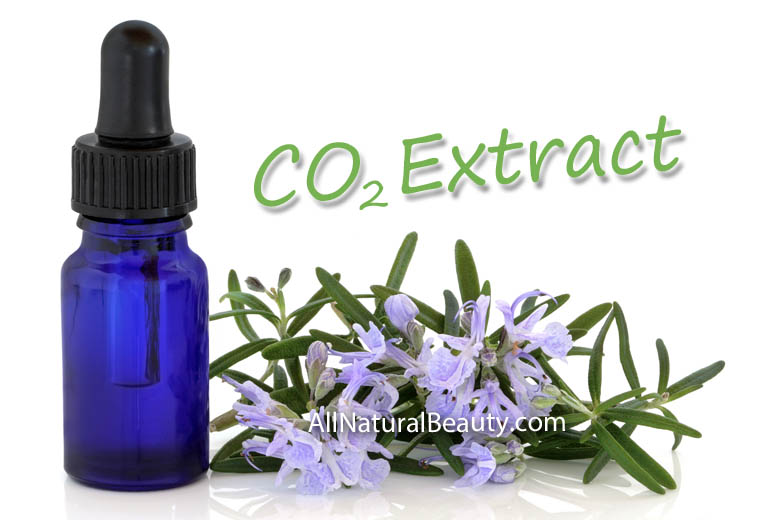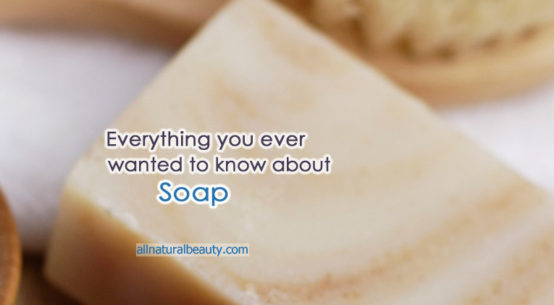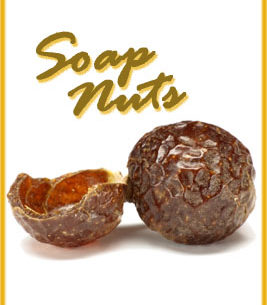
CO2 Extracts for Perfumery & Skin Care
A Compilation of Data
Synopsis: CO2 Extract (Carbon dioxide extracts) are closer in composition to the oil as it occurs in the botanical plant than those obtained by other techniques. Best as a flavor and wonderful perfume ingredient: no solvent residue, no off notes, more top notes, more back note, and better solubility.
– 11 selected CO2 Extracts Courtesy Eden Botanicals
– 5 more CO2 Extract
CO2 Extract are another way for humans to ‘get’ the scent out of a plant. The more traditional way is to steam, or water distill or to extract via solvents. But CO2 extraction tries to capture as much of the scent as possible as well as some of the plant compounds from natural material by using a natural substance, carbon dioxide, to make a completely natural scent and flavor. The CO2 extract is also called supercritical CO2 extraction and this process has many benefits over the traditional distillation processes. It is “supercritical” as the carbon dioxide has liquid properties while remaining in a gaseous state.
When choosing a scent whether a standard steam-distilled essential oil or other process, the way it is processed should be considered. Carbon dioxide extracts, CO2, Extact are extremely pure and can be used in herbal medicine as well as aromatherapy and natural perfumery.
As David Moyler says, “they more closely resemble the aroma and taste of the botanical starting material than the steam distilled equivalent.” These carbon dioxide extracts, CO2, are closer in composition to the oil as it occurs in the botanical plant than those obtained by other techniques. Best as a flavor and fragrance ingredient: no solvent residue, no off notes, more top notes, more back note, and better solubility.
CO2 extraction also aims to capture as much of the scent as possible from a natural material.
“This technology uses carbon dioxide, which turns to a liquid at high pressure, and passes it over the natural material to extract all the scent components without damaging them. “
“CO2 extracts express nature like no other extract,” says Bakouche. “They offer some facets that don’t exist in essential oils or absolutes — where the molecules are damaged or burned away.”4
In CO2 Extracts, during steam distillation, many artefacts are produced that do not occur in the natural botanical and can be easily detected even by simple odor evaluation. Essential oils have traditionally been obtained using either steam or hydro distillation or extracted using chemical solvents such as hexane, heptane or ethanol.
How Is CO2 Extract Done:
The CO2 extraction process consists of pumping pressurized carbon dioxide into an airtight chamber filled with plant matter. When carbon dioxide is subjected to pressure it becomes “supercritical” and has liquid properties while remaining in a gaseous state.2 Low heat is also applied to aid extraction.
“As the pressure inside the container rises, the C02 gas nearly liquifies, bathing the plant material in supercritical C02. The combination of high pressure and low temperatures encourages the plant material to releases its aromatic components. After a period of time, the pressure is reduced and the supercritical C02 then changes back to its gaseous state, completely dissipating from the extracted material.” 6
Because of the liquid properties of the gas, the CO2 functions as a solvent, pulling the oils and other substances such as pigment and resin from the plant matter. Thus, the difference between CO2, or supercritical, extraction and traditional distillation is that CO2 is used as a solvent instead of heated water or steam. The temperature involved in the supercritical extraction process is around 95 to 100 degrees F. as opposed to 140 to 212 degrees F. in steam distillation.3
The CO2 supercritical extraction process eliminates the need for potentially harmful solvents like hexane, avoiding unnecessary environmental pollution and potential human bodily harm. Another very important consideration is that the supercritical CO2 extraction process avoids heat degradation to the plant matter, producing an essential oil that is a more authentic version of the original plant matter. Many medicinal properties of the plant are thus kept intact in the oil, exemplified by German Chamomile extract. Another positive aspect to the CO2 distillation process is the aroma of the essential oil. The CO2 supercritical extract offers a more genuine aroma of the actual herb, spice or plant. The aroma of the CO2 extracts of Ginger, Cardamom and other spices are more natural, etheric and warm in nature rather than the somewhat harsh and intense aroma the same plants that have been steam distilled.5
For instance, Eden Botanicals, love the spice oils derived using CO2 technology, and believe that they are superior to the steam distilled spice oils. Comparing like-named oils you will find quite different oils, with very different aroma profiles. As an example, in Patchouli, some people prefer the steam-distilled type with its more earthy, woody scent to the fresh, greener aroma of the Patchouli CO2 extract. it always comes down to personal preference.5
Some Perfumery Information ~ CO2 extract should be stored in the refrigerator to extend use. They do contain some of the plant components and thus more easily succumb to oxidation. Some will crystallize a bit and will need to be warmed to use. They are soluble in essential oils and carrier oils but often not soluble in alcohol. Some of the CO2 extracts, separate, and are clear to see through and called “Extra Select or Fine” and are somewhat soluble in alcohol. If you are making a perfume product, the CO2 extract will usually drop out of solution and will need to be aged somewhat, stood upright for 24 hours for the plant solids to settle, then filtered or decanted before being used.
Total CO2 extracts are often more difficult to work with as they also contain plant solids as well as the essential oil and maybe thicker and require specialized consideration when diluting.
Agarwood CO2 Extract ~ Aquilaria malaccensis oil is produced from the infected decaying heartwood of cultivated trees. This heartwood is saturated with an oleoresin that when distilled is the basis of an incense or is extracted. Because the trees are cultivated it makes the process more ecologically sound. This oil is thick and opaque and requires gentle heating in order for it to be mixed into blends. It is a deep rich earthy and somewhat spicy odor that takes some getting used too. It can be used in perfumery in the base note or as a fixative.
Ambrette Seed CO2 Extract ~ Abelmoschus moschatus. Also called Hibiscus abelmoschus L. This musky oil is well known for its use, inhaled, to reduce stress, and fatigue. Marcia Elston said in 2010, “Ambrette seed CO2 has similar application to Ambrette seed absolute in fine, sophisticated perfumery to impart a note similar to animal musk. It is best aged for several months before use, which will subdue the initial fatty notes. It has a rich, sweet floral-musky odor, with a note similar to wine or brandy. Ambrette seed is very complex with an incredible tenacity (perceptible at .01-.04 mg%).” The odor is very memoristic, you will not forget it and is sort of like a warm toast with an earth and wood scent. It has an ‘exalting’ effect in a perfume.
Angelica root CO2 Select Extract ~ (Angelica archangelical) Angelica Root CO2 has an earthy, green herbaceous aroma with a spicy subsidiary notes and clean spicy, musky/woody back notes. Although it has a very fine, delicate aroma, it is extremely tenacious – a little goes a long way. Angelica Root is noted for its depth, tenacity and for one of its important constituents – cyclopenta-decanolide, a musk-like lactone, making it highly valued for use in natural perfumery. 3
Black Cumin seed CO2-Organic ~ (Nigella sativa L.) Black Cumin seeds have been cultivated since Assyrian times and were preserved in King Tutankhamun’s tomb. They are used to flavor bread and considered medicinal and the oil antibacterial. The extract is used in hair care products to stimulate hair growth and in skin care products to replenish tone ~ they contain essential fatty acids like linoleic and linolenic acids.
Black Pepper peppercorn CO2 Extract ~ (Piper nigrum) Black Pepper CO2 extracted from the dried unripe fruit is warm and spicy and also a fruity scent. In studies the CO2 showed antioxidant activity. Pepper should be diluted and used with caution, as the CO2 can be a skin irritant.
Butter CO2 ~ Sometimes called Butyrum (butter) and it is extracted from milk fat, has had all water content removed. A small amount of Rosemary antioxidant is added for shelf life stability. This is an oily/fatty smelling product that is buttery and creamy, and Eden Botanicals say that “… it can trigger olfactory memories of buttered popcorn and movie theatres”. In perfumery, it can be used in the base note or the fixative note. When used, the dry down in a perfume will leave a fatty note that is desirable in floral odors. This is one of my favorite additions to floral perfumes especially to the thick-flowers like Jasmine. Formula: I also have made a delicious smelling accord that I call Breakfast with the CO2 of Chocolate, Coffee, Vanilla and Butter — it is just fantastic.
Calendula CO2 ~ Calendula officinalis is a thick viscous orange-colored product that needs to be diluted in cream, or oil to be used in products for the treatment of skin disorders. When diluted it is helpful for pain and is as an antiseptic and anti-inflammatory. The petals and pollen are extracted for the esters to be used as an anti-inflammatory and for the colorful carotenoids of flavoxanthin and auroxanthin as antioxidants. The leaves and stems contain mostly lutein (80%) and beta-carotene. This is a wonderful part of any skincare formula. I am particularly fond of this with a drop of Ambrette to enhance the lovely toast smell of both. Here is how to make your own Calendula Infused oil (when the flowers are blooming in summer).
Caraway seed CO2 ~ Carum carvi – Caraway seed smells like seeded rye bread. The scent is from carvone, which have isomers that produce both the Caraway scent and the Spearmint scent. Caraway is used in the pharmaceutical and food industries as a flavor ingredient, in body care products and perfumery is a spicy, green scent. CO2 extracts of spice oils are often preferable to the steam-distilled ones and they are preferred for natural perfumery purposes although they do have some of the plant particles in them as well.
Cardamom, Whole seed CO2 Extract ~ Cardamom seed (Elettaria cardamomum) via carbon dioxide extraction yields the aroma of fresh cardamom pods. A small amount goes a long way! It is wonderful to use in perfumery as a bridge note between the flowers and the roots of plants such as Jasmine and Vetivert. In South Asia, the seeds are used to treat infections in teeth and gums, to prevent and treat throat troubles, congestion of the lungs and pulmonary tuberculosis, inflammation of eyelids and also digestive disorders.
Chamomile, Blue flower CO2 – Organic ~ Matricaria chamomilla is a dark greenish-brown, opaque, thick and viscous product. It retains more of the natural floral odor of the flower sort of a green apple fruit scent and is a strong anti-inflammatory when added to any skin care product. Use it by taking a bit and working it well into some oil or your skin cream or lotion and then add more lotion until all is incorporated. In commercial products when Chamomile CO2 is used it is normally around 0.2±% of the total blend. In P. Davis book, she mentions that “use of German Blue Chamomile can be especially helpful where skin conditions may be aggravated by stress, and indeed where stress may be the underlying cause.”
Champaca CO2 Extract ~ (Michelia champaca) Champaca has a delicious and captivating aroma, with a tangy citrus but highly floral odor. The plant is highly revered by the followers of Hinduism and Buddhism who use it during religious ceremonies. The extract from the flowers of Michelia alba is used in preparation of the famous ‘Joy’ perfume. Medicinally, the tree has wide applications; the bark is used to prepare a tonic, the oil extracted from flowers is used for aching muscles and for relieving gout.
Cinnamon Bark CO2 Extract ~ Cinnamomum zeylanicum) Eden Botanicals says their Cinnamon retains the true scent of dried cinnamon. You can add it to your products as part of your scent blend as an antibacterial and for that delicious spicy scent. Cinnamon oil and extract contains eugenol, it is antispasmodic, anti-infectious, antifungal and is indicated for tooth care, for respiratory blends, or the herb tea for sleepiness or depression. This is a skin irritant, use with moderation and with caution.
Clove Bud CO2 Extract ~ Syzygium aromaticum, are the sun-dried, unopened flower buds of the Clove tree, a warm, spicy and sweet aroma and used in many types of therapeutic formulas. This aromatic aid must be diluted as may cause skin and mucous membrane irritation. This oil is contraindicated during pregnancy. http://jeanne-blog.com/clove-eoherb-profile-information/
Coconut Pulp CO2 ~ The coconut tree (Cocos nucifera) is a member of the family Arecaceae (palm family) and the only species of the genus Cocos. The term coconut can refer to the whole coconut palm or the seed, or the fruit, which, botanically, is a drupe, not a nut. Organic Coconut CO2 has a strong aroma of coconut and the extract has great tenacity in perfumery and is an excellent choice for soothing skin and body care products. This is a wonderful product to use.
Coffee Bean CO2 – Organic ~ Coffea arabica, grown organically in India, this super critical carbon dioxide extract has a wonderful stimulating odor, is used in perfumery in a base note and that can be used in an accord and works very well in SPA products for its stimulating scent. There is some stimulant action in any product with Coffee CO2.
Coriander Seed CO2 ~ (Coriandrum sativum) has long been cultivated for the seed and in fact is one of the earliest words recognized in deciphering early language, it was preserved in Tutankhamun’s tomb (1325 BC), one of the ‘bitter’ herbs prescribed by Jews at the Feast of the Passover, and now is one of the most heavily used herbs. For flavoring gin, bread, curry and especially nice for a green scent for perfume and soap. Very aromatic, the EO containing up to 75% linalool, used as an anti-inflammatory for blackheads and oily skin and inhaled for stress and anxiety. Carbon dioxide extracts CO2 are closer in composition to the oil as it occurs in the botanical plant than those obtained by other techniques. Best as a flavor and fragrance ingredient: no solvent residue, no off notes, more top notes, more back note, and better solubility.
Evening Primrose seed CO2 – Organic ~ Evening Primrose (Oenothera biennis), is a night-blooming, flowering plant with bright yellow and slightly fragrant flowers. It is not actually a Primrose. The plant is native to North America and was introduced to Europe in 1619, has since become common throughout the Mediterranean, is cultivated in other parts of the world and grows virtually anywhere. Oenothera biennis is a seed oil with a warm and fatty scent that is best used in combination with other carrier oils. It is a rich source of gamma-linoleic acid (GLA), an essential fatty acid that the body cannot make on its own but that is of major importance to the health of the body. Evening Primrose oil is used in cosmetics, dietary supplements, skin care products, and for other uses.
Do not take Evening Primrose oil by those who are taking prescription blood thinners such as (aspirin, clopidogrel (Plavix).
Fenugreek seeds CO2 ~ Trigonella foenum-graecum is an annual plant in the family Fabaceae, with clover like leaves. It is cultivated worldwide as a semiarid crop. Its seeds and its leaves are common ingredients in dishes from South Asia and is has been known from at least 4000 BC and even found in the tomb of Tutankhamen. Fenugreek dried, or fresh leaves are used as an herb, the seeds as spice, and the fresh leaves and sprouts as a vegetable. When eaten it can cause a maple odor to urine and breast milk. It is used as food supplement and for flavoring food products.
Sotolon is a lactone and a powerful aroma molecule and the chemical responsible for Fenugreek’s distinctive sweet smell. At very low proportion it adds this sweet burnt sugar scent to a perfume. Eden Botanicals mentions its use in used in perfumery in extremely minute amounts, for its fresh, sweet, calming aroma that is warm, and powdery, with soft spicy-nutty-earthy undertones of maple (sotolactone) sweetness. Contains neryl acetate which also occurs in Helichrysum and is a wonderful substance for skin healing. The CO2 stabilized with Rosemary extract.
Frankincense CO2 Extract (Boswellia serrata from India and B. carterii from Somalia) from the resin. These are therapeutic extracts with a crisp fragrance and retains their ancient quality. They are great additions to perfumery and are used in the middle, base or fixative note depending on what you wish to achieve. “… both of our Frankincense CO2 oils offer the natural botanical perfumer a more complete aromatic profile with higher, brighter top notes and deeper, more complex bottom notes than the steam distilled Frankincense oils”5. Frankincense from Somalia is intense and tart and for me the B. serrata is more memoristic of the resin when it is burned.
Galangal CO2 select extra – organic ~ Has been also been incorrectly called Ginger Lily. Several different species whose rhizomes are used are called Galangal, including Alpinia galangal and Kaempferia galangal. This is a spice like ginger when used as the herbal part, the root, is an aromatic stimulant, carminative and stomachic. It is used against nausea, flatulence, dyspepsia, rheumatism, catarrh and enteritis. It has tonic, antibacterial and anti-inflammatory qualities and is used for these properties in veterinary and homeopathic medicine. (The several types of Galangal that I have smell identical to the Hedychium CO2 and I wonder if the growers are selling the same plant as two different items?) The scent has depth and tenacity, and woody and spicy. Soluble in carrier oils and neutral spirits. This is a beautiful addition to a floral perfume as it adds a depth and intensity. Kaempferia galangal is considered an endangered species.
Ginger root CO2 Extract (Total) ~ (Zingiber officinale) This total extract is dark and potent as well and more like the root in nature. The essential oil of Ginger does not have the irritating bite as does the herb itself and can be taken — 1-2 drops in Ginger ale for nausea. It is a pleasant addition to a drink. However, the extract of Ginger does have a ‘bite’. The scent of both is a warm, spicy, green odor and very good in all sorts of perfume combinations. A wonderful perfumery items.
The extract is true to the warmth and spice of fresh ginger root.
Jasmine CO2 ~ Jasminum grandiflorum, India, the CO2 is extracted from the Jasmine concrète flower, rather than the flowers themselves. The concrète is produced during the first stage of creating Jasmine Absolute, and then the oil from the concrète is extracted using modern CO2 technology. The result is a very viscous oil with the Jasmine aroma that is lighter, more delicate and more authentic than the Jasmine absolute.
Juniper Berry CO2 ~ Juniperus communis berry extract produces a rich green and deep conifer scent but also soft and pleasing. This can be used in all blending and perfumery. Use it in body care products an astringent cleanser for the skin and body and a wonderful odor in men’s products. I also like to use 5 drops of this with 1-oz. of 95% neutral spirits as a deodorant (of course, gin might work just as well!).
Kava Kava root CO2 ~ Piper methysticum (from the Latinized Greek meaning intoxicating pepper) is a specialty product from the root that contains a total of 70% kavapyrones, the constituents known for calming emotions and inviting restfulness. In very small quantities, this specialty oil is an excellent addition to relaxing blends, especially for massage. I have used the pepper in the long ago past but personally am having my first experience with the carbon dioxide extract and will write more about it at a later time.
Myrrh resin CO2 ~ Commiphora myrrha is extracted from the resin by supercritical fluid extraction with natural carbon dioxide. It takes 11 to 16 kilos of raw material to yield 1 kilo of product. The CO2 had a deeper yellow color than the steam-distillates and is clear, non-viscous, of low intensity in scent and bitter to taste. It is an earthy spicy scent with a back note of leather. This was most surprising to me as my experience from 1970 to just a few years ago is that Myrrh essential oil was always dark golden color, clear, viscous, and very very intense with more tenacity than the Myrrh extract. The significant history of Myrrh dates back thousands of years for its extensive use in healing preparations, perfumery, incense, and ritualistic ceremonies. Myrrh essential oil and CO2 can be used effectively in your aromatherapy and natural perfume blends.
Patchouli CO2 Extract ~ Pogostemon patchouli. This leaf extract yields a fresh, uplifting aroma that is very different from other Patchouli oils. It is less earthy than other oils yet provides an aroma that is more similar to that of fresh Patchouli plant leaves.
Pomegranate Seed CO2 – Organic ~ Punica granatum. CO2 seed extraction process for carrier oils ensures a product that more closely resembles that which is found in the raw plant material and has a longer shelf life than cold processed carrier oils. EO are soluble in this seed extract but this extract is not in alcohol. Best in use for skin care products rather than EO perfumery. Pomegranate Seed CO2 Extract is extracted in Germany, is highly recommended for use in moisturizing creams and lotions, anti-aging formulations, and formulations for dry, irritated, or chapped skin. It is very effective in softening dry, irritated and aging skin.
Raspberry Seed CO2 – Organic ~ CO2 extract from Rubus idaeus seed is a carrier oil and has a subtle fruity, fragrant scent that makes it a nice addition to a fruity perfume. When mixed in with other fruity essential oils it won’t dissolve but if you leave it rest for a few weeks, the scent will transfer into the perfume and leave its nice fruity odor behind. In perfumery, it is always best to age the scent for a month or so before attempting filtering or decanting. In skin care products, this extract adds antibacterial and antioxidant properties, Raspberry Extract is recommended as part of the carrier blend; it is very soothing and relaxing for skin as it relieves irritation and improves tissue firmness.
Rose Hip Seed CO2 – Organic ~ (Rosa eglanteria aka Rosa rubiginosa aka Rosa canina) but not Rosa mosqueta, which is not a recognized species. This carrier oil from Rose Hips are the fruiting (seed-holding) bodies of the Rose that develop after the Rose has been fertilized, petals drop off, the hip (uterus) enlarges, and forms seeds. The hips are picked when ripe and are very high in vitamin C. The seed is removed and pressed and subjected to carbon dioxide to extract the oil, which is often deep red (when some of the fleshy hip is left) or clear. It often has a strong, almost fishy odor. It has been found to be a very effective skin treatment as it may promote tissue regeneration. Rose Hip Total is good used in lotion or cream for scars, burns, and wrinkles. Use by diluting with other vegetable oils and blends for skin treatment.
Carbon dioxide extracts CO2 are closer in composition to the oil as it occurs in the botanical plant than those obtained by other techniques.
Best as a flavor and fragrance ingredient:
no solvent residue, no off notes, more top notes, more back note, and better solubility.
Rosemary [Antioxidant] leaf CO2 – Organic ~ Rosmarinus officinalis. Rosemary CO2 has the true herbal scent of the Rosemary that is grown in the fog; it is one that is herbal, spicy and fruity, mild and delicious. It is used as an antioxidant as it contains 9-14% carnosic acid. Verbenone type CO2-6 is extracted in Spain and is used in skin care or for great Rosemary Garlic bread.
Formula: (Take a dab and mix with butter or Olive oil and apply to your bread and toast). Inhale and apply. http://jeanne-blog.com/rosemary-chemotypes-and-hydrosol/
Sandalwood CO2 Extract ~ Santalum spicatum. This is a sustainable, plantation-grown, CO2 extracted from the Sandalwood Nut for face, hair and body care. This lightweight, ‘dry’ oil is ideal for many products for the hair and body; for facial rejuvenation creams and serums. It works well with Rosehip seed CO2 extract.
Sea Buckthorn [fruit pulp] CO2 Extract (Total) ~ Hippophae rhamnoides. This oil that has a woody aroma and a beautiful, deep red color. Sea Buckthorn is valuable and known for its ability to nourish, improve and restore the skin. It can also be used to add a red tint to your essential oil blends. Aside from erosion control, the plant is primarily valued for its golden-orange fruits, which provide vitamin C, vitamin E, and other nutrients, flavonoids, oils rich in essential fatty acids, and other healthful components. The leaves are now also being used for making a beverage tea; additionally, they contain triterpenes. It is an ingredient in sunblock products. Hippophae oil has UV-blocking activity as well as emollient properties-and it is an aid in promoting regeneration of tissue. Studies in China show that used as a moisturizer its treats eczema; for skin regenerating cosmetics; in face cream; as a nourishing night cream; emollient cream for eyes; tonic skin lotion; after shave lotion; and in shampoo and more.
Spikenard CO2 ~ Nardostachys jatamansi. Spikenard is an aromatic rhizome. The botanical name has its roots in the Hindu word Jatamansi which means “lock of hair.” Its use goes back in several cultures and religions. Medically it’s part of the Ayurveda and is traditionally considered to calm the nerves and promote awareness and strengthen the mind. It is in the same family as Valeriana jatamansi (Indian valerian) and was sometimes used treatment of hysteria. A very earthy grounding scent. Spikenard, is useful to use when you honor the ‘mother’, the Earth, and to consider how you can encourage protection and support of the environment. Use only a drop or two on your body or on a handkerchief, as you inhale this rooted scent.
Turmeric root CO2 – Organic ~ Curcuma longa. The herb (rhizome) is use for blackheads and good skin tone. Make a paste of with a pinch of turmeric powder or a drop of turmeric with some drops of Lemon juice and apply this paste on face. Keep until it is dry. Rinse thoroughly with warm water. Daily use definitely improves skin tone as well as helps to remove blackheads. Curcumin is the active ingredient in turmeric that has been shown to have a wide range of therapeutic effects. Curcumin is known for its antitumor, antioxidant, anti-amyloid and anti-inflammatory properties. Turmeric (Curcuma longa) is also known as tumeric or curcumin.
Vanilla Bourbon pod CO2 or Vanilla Bourbon organic ~ Vanilla planifolia is a creamy substance extracted with carbon dioxide with the true floral, woody, fruity, lovely Vanilla odor, it is pale yellow to tan, has a shelf life of about 3 years. This can be used as a flavoring agent as well as in solid perfumes. Just lovely especially in a foodie perfume with Coffee and Cacao CO2 and Raspberry, Ginger, Cardamom and Butter CO2’s.
> CO2 extracts are closer in composition to the oil as it occurs in the plant and has better solubility in the product, especially in carrier oil. These carbon dioxide extracts, CO2, are closer in composition to the oil as it occurs in the botanical plant than those obtained by other techniques. Best as a flavor and fragrance ingredient: no solvent residue, no off notes, more top notes, more back note, and better solubility. They are wonderful scented healing addition to any skin care application.<
There are many more carbon dioxide extracts available, I have listed just the ones that are my favorites. I would also like the thank Eden Botanicals and Prima Fleur Botanicals for the many samples they sent to me to explore.
All of these and more are available as CO2 extracts. Some are more easily obtained than others: Agarwood CO2, Ambrette Seed CO2 – Fine, Angelica Root CO2, Arnica CO2, Ashwagandha CO2, Bakul CO2, Black Cumin CO2 – Organic, Borage CO2, Butter CO2, Calendula CO2, Caraway CO2, Cardamom CO2 or Cardamom CO2 – Org, Carrot-jojoba CO2, Chamomile, Blue CO2 – Organic, Champaca CO2, Chia CO2, Chili/Sunflower CO2, Cinnamon Bark CO2, Coconut CO2, Coffee Bean CO2 – Organic, Coriander Seed CO2, Davana CO2, Elemi CO2, Evening Primrose CO2, Frankincense CO2, Galbanum CO2, Gotu Kola CO2, Hazelnut CO2, Jasmine CO2, Juniper CO2, Mace CO2, Marjoram CO2, Massoia Bark CO2, Melissa Leaf CO2, Millet CO2, Neem CO2, Orris Rhizome CO2, Pomegranate Seed CO2, Raspberry Seed CO2, Rhatany Seed CO2, Rosehip Seed CO2, Rosemary Leaf CO2, Sage Leaf CO2, Sarsaparilla Root CO2, Saw Palmetto Seed CO2, Schisandra Fruit/Seed CO2, Sea Buckthorn CO2 Hippophae, Turmeric CO2, Usnea CO2, Vanilla CO2, Wheat Germ CO2.
References:
http://www.cnn.com/style/article/future-of-fragrance/index.html
https://www.ncbi.nlm.nih.gov/pubmed/24607131
http://www.flavex.com/en/naturextrakte/products/
Moyler, David A. Liquid CO2 extraction in the flavor and fragrance industries. Used with permission of David A. Moyler. October 1988. Chemistry & Industry Magazine
Rose, Jeanne. Aromatherapy Studies Course www.jeannerose.net/aromatherapy.html
Moyler, David A. Liquid CO2 extraction in the flavor and fragrance industries. Used with permission of David A. Moyler. October 1988. Chemistry & Industry Magazine
https://www.analoxsensortechnology.com/blog/2016/01/14/supercritical-carbon-dioxide/
Eden Botanicals.com
Bakouche, Stephanie. Perfumer at Edmond Roudnitska Art et Parfum
Eden Botanicals
Pace, Sue. Plant Therapy “CO2 Extracts—What’s All the Buzz About?”, 2015.
Moderation in All Things.
Be moderate in your use of essential oils and carbon dioxide extract
as they are just not sustainable for the environment.
Be selective and more moderate in your usage.
Use the herb first as tea or the infusion. —JeanneRose 2014
Do not Ingest essential oils or CO2: Although some are important flavoring oils and extracts in the flavor industry and thus ingested in very small amounts in many foods, especially meats and sausages, it is not a good idea to use them yourself, do not take internally, either in capsules or honey.
Sustainability Issues: Essential oils and carbon dioxide extracts as ingredients in products are just not sustainable for the environment. A large quantity of plant material is used for a relatively small quantity of output. Be selective in your use of these ingredients. Be more moderate. Use the herbs instead.
Safety Precautions: Do not apply the product neat, especially to the underarms or delicate parts of the body. Most are probably not to be used on babies, children or pregnant women. Many aromatherapist suggest that there are some oils and CO2 extract not be used at all. However, as with many plants and essential oils, chemistry is subject to change depending on species and terroir.
Patch Test: If applying a new substance to your skin always perform a patch test to the inner arm (after you have diluted it in a vegetable carrier oil). —Wash an area of your forearm about the size of a quarter and dry carefully. Apply a diluted drop (1 drop EO + 1 drop carrier) to the area. Then apply a loose Band-Aid and wait 24 hours. If there is no reaction, then go ahead and use the oil in your formulas. —The Aromatherapy Book, Applications & Inhalations, p. 64
DISCLAIMER: This work is intended for informational purposes only and is not a substitute for accurate diagnosis and treatment by a qualified health care professional. Dosages are often not given, as that is a matter between you and your health care provider. The author is neither a chemist nor a medical doctor. The content herein is the product of research and personal and practical experience. Institute of Aromatic & Herbal Studies – Jeanne Rose©
- Education
- Books
- Courses
Ms. Rose is the author of over 20 books, including Herbs & Things, The Herbal Body Book, The Aromatherapy Book, and Jeanne Rose’s Herbal Guide to Food, and she has taught herbs, aromatherapy and distillation extensively throughout the U.S. She organized and was President of the first large Aromatherapy organization in the United States, NAHA, and speaks widely at many other events and conferences. She teaches distillation techniques for quality essential oils throughout various parts of the world. The word, ‘hydrosol’ as used for the waters of distillation, was first used and put in place by Jeanne Rose in 1990.

Aromatherapy Classes,
Certification Weekends and Seminars
taught in person by Jeanne Rose
ENROLL NOW – Visit http://jeannerose.net/calendar.html
or call 415-564-6337 or email aromaticplant@yahoo.com
Enrollment limited.
Seminars are valid for 15 CE and towards Practitioner Certification

Jeanne Rose is the author of 22 books on herbs and aromatherapy. Most recently, Jeanne authored “375 Essential Oils & Hydrosols” which is a complete reference book of 375 aromatic plant extracts and hydrosols with phytochemical, clinical and botanical indices.
She has released several booklets since 2006.

Jeanne Rose is the Director of the Institute of Aromatic Studies, principal tutor of both the Herbal Studies Course© and the Aromatherapy Studies Course – Practitioner© by Distance-study and Aromatherapy Course by home-study.
Learn more about the 3 types of home studies courses:
The Aromatherapy Course
– Home and Family©
AROMATHERAPY STUDIES COURSE©
– Practitioner
HERBAL STUDIES COURSE©
Ms. Rose is the author of over 20 books, including Herbs & Things, The Herbal Body Book, The Aromatherapy Book, and Jeanne Rose’s Herbal Guide to Food, and she has taught herbs, aromatherapy and distillation extensively throughout the U.S. She organized and was President of the first large Aromatherapy organization in the United States, NAHA, and speaks widely at many other events and conferences. She teaches distillation techniques for quality essential oils throughout various parts of the world. The word, ‘hydrosol’ as used for the waters of distillation, was first used and put in place by Jeanne Rose in 1990.

















